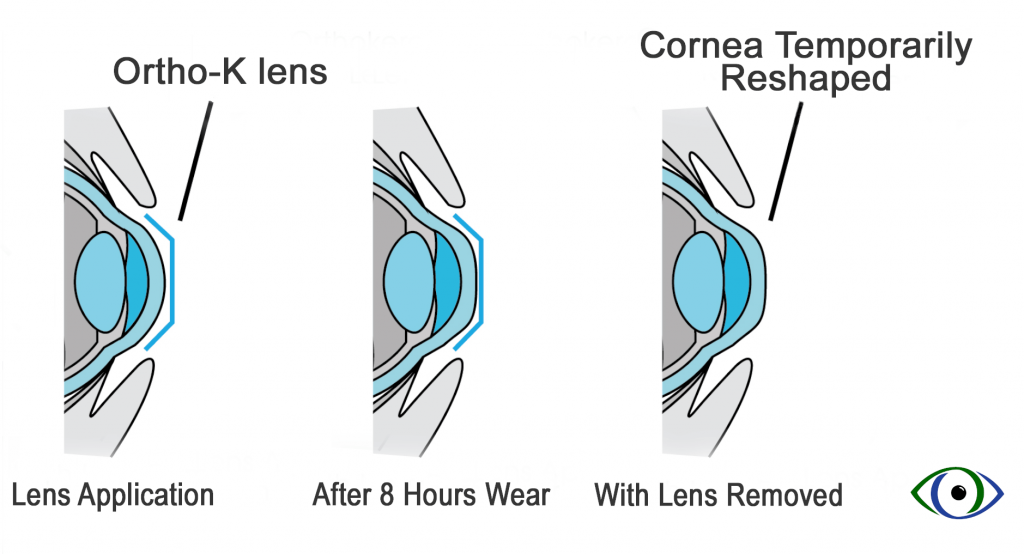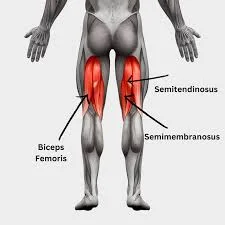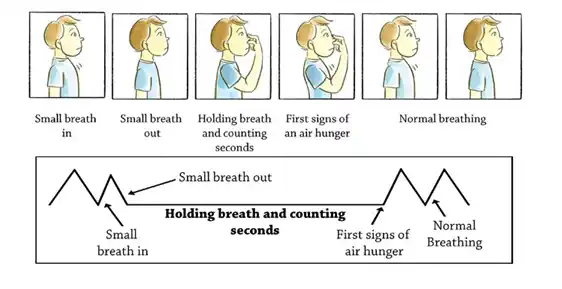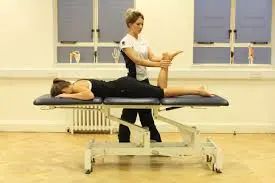Corneal Refractive Therapy
Introduction
Corneal Refractive Therapy (CRT), also known as Orthokeratology, is a non-surgical treatment designed to correct vision by temporarily reshaping the cornea using specially designed gas-permeable contact lenses.
Worn overnight, these lenses gently mold the cornea, allowing for clear vision during the day without the need for glasses or contact lenses. CRT is particularly effective for individuals with mild to moderate myopia (nearsightedness), and it offers a safe, reversible alternative to laser eye surgeries such as LASIK. This therapy is commonly used for both children and adults to manage vision correction and slow the progression of myopia.
Its objective is to prevent nearsightedness, often known as myopia, from worsening. Even while softer prescriptions have greater CRT success rates, harsher prescriptions can still be reversed. FDA figures show that over 65 percent of individuals in CRT lens testing obtained 20/20 visual acuity.
It’s a rather easy process. The act of taking CRT molds during sleep and implanting them before bedtime is necessary. The lenses softly reshape your cornea, allowing you to awaken with clear eyesight. You must wear CRT reshaping glasses every night which helps in maintaining clear vision daily because the correction is only temporary.
Children and other individuals who are short-sighted and not good candidates for vision correction surgery can benefit greatly from CRT. Any age group with good eyesight can use CRT. People who participate in sports, work in very dusty and dirty areas, or need vision correction can easily use a CRT.
CRT is utilized for:
Adults or children who have mild nearsightedness.
Individuals who prefer rather than to use glasses or contacts during the day.People who do not suffer from any illnesses that might damage their eyes.
What to anticipate:
CRT lenses are constructed of overnight contact lens material and are specifically designed for this purpose. Every night before you go to bed, the lenses will be put in.
The lenses progressively rebuild your cornea over the night, resulting in clear eyesight when you wake up. The outcome is a vision that is natural and clear for the bulk of your awake hours.
Most patients see notable improvements in the first few days of therapy, and within 10 to 14 days, they achieve their optimal vision.
These lenses should be chemically cleaned after each usage. Your physician will advise you on the right course of action and when to have your lenses replaced.
Reasonable expectations:
With CRT, you should use your corrective lenses less frequently during the day. However, we are unable to guarantee that you will have the results you desire. The majority of our patients are glad they tried CRT.
The usage of contact lenses carries some danger in any case. Contact lenses with CRT are not thought to be any more dangerous than regular contact lenses. Because this operation is reversible, some people may notice changes in their vision in the evening.
Alternatives to CRT
There are other methods for addressing nearsightedness than CRT.
Who is a possible CRT candidate?
CRT lenses can be an excellent choice for short-sighted people who are too young for LASIK surgery and are not ideal candidates for vision correction surgery. Any age can undertake the procedure as long as the eyes are in good health because it can be discontinued at any time without permanently changing the eye.
CRT will be especially interesting to people who do sports or work in dirty, dusty environments where it could be difficult to wear contact lenses.
What results may one expect from CRT?
More than 90% of people could see 20/20 or better, which is the legal minimum needed to drive without glasses in most jurisdictions.
The operation of CRT lenses
The cornea, or front surface of your eye, is gradually reshaped by the lenses as you sleep to improve your vision. You must use the reshaping lenses every night to preserve decent vision throughout the day because their effects are transient and often last one or two days. Children and other individuals who are short-sighted and not good candidates for vision correction surgery can benefit greatly from CRT.
WHAT DOES CRT TREATMENT ENTAIL?
The concept of CRT was first proposed by eye experts in the late 1950s when they observed that short-sighted patients using hard contact lenses occasionally saw a brief improvement in their unassisted vision. This is because the cornea’s shape greatly influences how light is refracted and how pictures are sent to the retina.
An unevenly shaped cornea can cause astigmatism and hyperopia (farsightedness). However, the cornea is also pliable; it may temporarily take on a different shape. As a result of this finding, corneal refractive therapy—also referred to as orthokeratology or Ortho-K—was developed.
Wearing specially-made contacts to bed at night is part of the CRT process. As you sleep, the lenses softly press on your corneas to realign them into the correct prescription. The impact may sometimes last for many days when the CRT lenses are worn overnight. You can get ongoing eyesight correction with them. Since the effects are just temporary, you may always choose to return to wearing standard contacts or glasses whenever you like. Many patients believe that this flexibility offers substantial benefits over refractive correction surgery.
ARE YOU SUITABLE FOR CRT THERAPY?
There isn’t a single vision correction technique that works for everyone, and CRT is no different. Children with mild to moderate nearsightedness benefit the most from it, however adults can also benefit from it.
Regarding some situations of astigmatism or farsightedness, CRT is a workable treatment. Since attaining the finest possible eyesight is ultimately the primary purpose, we would be happy to offer you further choices if your instance of extreme nearsightedness, farsightedness, or astigmatism cannot be repaired with CRT. CRT is an excellent choice for people who play sports or partake in other activities when wearing glasses is impractical.
CRT may also help slow down the progression of myopia in younger individuals, so it could be a fantastic choice for your kids.
Who may be a candidate for CRT?
For those who are not the best candidates for vision correction surgery or who are too young for LASIK, CRT lenses may be a good option. Any age can undertake the procedure as long as the eyes are in good health because it can be discontinued at any time without permanently changing the eye.
CRT will be especially interesting to people who do sports or work in dirty, dusty environments where it could be difficult to wear contact lenses.
What results may one expect from CRT?
Over 90% could see 20/20 or better, which is the minimum legal vision required in most jurisdictions to drive without glasses.
CRT often has greater success rates with milder prescriptions.
What is the duration of CRT?
After a few days of taking CRT daily, you may see some improvement in your vision, but the complete effects may take several weeks. During this time, you could notice some glare and halos around lights, and your vision won’t be as clear as it would have been with contacts or glasses. You may need to wear glasses temporarily for activities such as driving at night until your vision is fully restored by the CRT lenses.
Is the CRT beneficial?
Some people find it uncomfortable to use gas-permeable contact lenses during the day.
The price of CRT
Compared to a typical contact lens fitting, the CRT technique takes significantly longer. It requires many trips to the doctor and maybe multiple pairs of lenses. For this reason, CRT costs are more than those associated with routine contact lens appointments.
Can I have CRT and LASIK in succession?
After CRT, LASIK surgery is a viable option. However, because CRT lenses alter the structure of your cornea, you must take a vacation from wearing them for a while—sometimes many months—to enable your eyes to allow your eyes to stabilize and regain their natural form. For your LASIK surgeon to prescribe an appropriate waiting period for you, make sure they are aware of your past experiences with CRT lenses.
Orthokeratology: VST and CRT
Known colloquially as “ortho-k,” orthokeratology uses precisely made, rigid gas-permeable contact lenses to gently realign your eyes as you sleep. By flattening the front surface of the eye, these lenses cure astigmatism and mild to moderate nearsightedness.
What You Must Understand About Refractive Therapy of the Cornea
1) CRT lenses are not a one-size-fits-all option. They are executed individually for each eye, according to the results of the patient’s eyes.
2)CRT, the most advanced form of Ortho-K, is FDA-approved as an accelerated overnight treatment. Using a topographical map of the surface of the eye and your prescription for glasses, your eye doctor measures the curvature of the cornea to select the right lenses. With the earlier Ortho-K, a variety of lenses would need to be worn throughout the day, which took longer and was less effective.
3) You can see with the CRT lenses on even though they are designed to give clear vision when not in use.
4) Achieving acceptable daytime vision is the aim of corneal refractive treatment; many patients can read the letters that are 20/20 on the eye chart. After just two weeks of consistent usage, CRT lenses can correct eyesight to the greatest extent throughout the day.
5) Children and teens can utilize corneal refractive treatment since the FDA has authorized it without regard to age.
6) Your doctor could periodically advise you to wear a range of CRT lenses to obtain the optimal prescription for the greatest potential vision correction. During the initial phases of the treatment, your ophthalmologist may request many appointments to evaluate the effectiveness and make any required adjustments.
7) The average cost of CRT therapy for both eyes is $1,000 to $2,000, while it can occasionally reach $4,000.
8) Those who have already had LASIK eye surgery may be candidates for corneal refractive treatment, albeit this is not always the case. Conversely, those who use CRT lenses can want to give them up and think about getting LASIK.
9) Corneal Refractive Therapy has several advantages, one of which is that it is a great alternative to wearing contacts during the day and is non-invasive.
Conclusion
In conclusion, Corneal Refractive Therapy (CRT) offers a safe, non-invasive option for vision correction, allowing individuals to enjoy clear vision throughout the day without the need for glasses or contact lenses. Its reversible nature and effectiveness in managing myopia make it a popular choice, especially for those seeking an alternative to surgery.
FAQs
What is the process of corneal refractive therapy?
Corneal refractive surgery, or CRT® lenses, is a non-surgical approach to correcting myopia that eliminates the need to wear contact lenses or glasses during the day. By adjusting the curvature of the cornea during sleep, CRT lenses let you see well throughout the day.
What is the duration of corneal refractive therapy?
You frequently need to change contacts every two to three years in order to address surface wear. The frequency of lens replacement, however, may vary depending on factors including protein synthesis and lens maintenance.
What is the price of corneal refractive therapy?
Orthokeratology Costs: Projections and Insurance Details for 2022…
As of July 2021, the average cost of a first visit for orthokeratology, often known as Ortho-K, ranges from $1,000 to $4,000. This covers the fitting of the lenses, an assessment of the eyes, and some post-operative care. Your costs will increase if more refractive faults need to be repaired.
What negative consequences might corneal refractive treatment cause?
There might be many disadvantages to this vision-shaping process, including the following:
Dry eyes.
Discomfort from wearing contacts when you sleep.
Blurry vision when not in use.
How safe is refractive eye surgery?
It is not typical for problems to result in blindness. However, a few side effects are common, such as temporary changes in vision and dry eyes. Still, most people find that their symptoms subside within a few weeks or months, and very few believe they will remain permanently.
References
- Corneal Refractive Therapy and Myopia Control (CRT). Visionarts Eyecare Center. https://www.visionartseyecare.com/eyeglasses-contacts/contact-lenses/corneal-refractive-therapy-and-myopia-control-crt/
- Corneal Refractive Therapy (CRT) – Metropolitan Eye Center. (2023, December 4). Metropolitan Eye Center | Metro Detroit | LASIK. https://www.metropolitaneyecenter.com/crt/
- Frequently Asked Questions from Five Points Eye Care regarding Corneal Refractive Therapy. Five Points Eye Care. https://www.fivepointseyecare.com/eye-care-services/orthokeratology-crt-vst/frequently-asked-questions-about-corneal-refractive-therapy/







